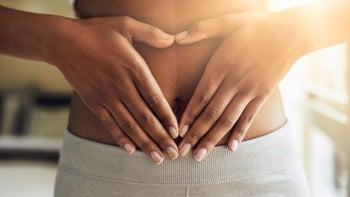
Bristol Stool Chart: Understanding the Different Types of Poop
Key takeaways:
It’s a good idea to note the color, size, and consistency of your poop every time you have a bowel movement.
The Bristol Stool Chart is a handy tool that can help you track the shape and consistency of your poop. It’s widely used by healthcare professionals and scientists.
Your poop provides a useful way to monitor your health and body on a daily basis. And it can give you important clues about your digestive health.
Table of contents
A healthy body needs a healthy gut. One good way to figure out if your gut is healthy is to look at your poop. Many things can change the appearance, texture, and color of your stool. For example, diet is a common influence.
Have you ever wondered whether your stools looked normal or not? The Bristol Stool Chart is a useful tool that can help you figure that out. It can even let you know when it’s time to see a healthcare professional.
What is the Bristol Stool Chart?
The Bristol Stool Chart is a tool that helps people understand and describe different types of poop. It includes pictures and descriptions of seven different types of poop, ranging from watery and loose to hard and lumpy. As you can imagine, “normal” does not mean the same thing to everyone, so having a chart helps keep everyone on the same page.
Search and compare options
By looking at this handy poop chart, you can get an idea of what might be normal or not. It can also help you communicate to your healthcare professional in a clear way. And it’s a great tool to help you track changes or patterns in your bowel habits over time.

How to use the Bristol Stool Chart
You can start by comparing the way your stool looks to the seven different types on the Bristol Stool Chart:
Type 1: separate, pellet-like hard lumps that are hard to pass
Type 2: lumpy, sausage-shaped stool
Type 3: sausage-shaped stool with cracks on the surface
Type 4: sausage-shaped stool but smooth and soft (like a snake)
Type 5: blobs that are soft and pass easily
Type 6: mushy stool in the form of fluffy pieces and ragged edges
Type 7: entirely liquid; no solid pieces
Then choose which number matches your stool:
If your stool is similar to types 1 or 2, you may have constipation.
Type 3 and 4 stools are healthy stool types. These are soft and easy to pass.
Stool types 5, 6, and 7 may mean that you have diarrhea.
Once you’ve figured out your stool type, you may be able to make certain dietary changes to achieve the normal types (3 or 4). For example, if you have a lack of fiber in your diet that is causing constipation, eating more fruits, vegetables, and whole grains may help. Or you may consider taking a fiber supplement.
Keep in mind that everyone’s bowel habits are different. And stools can be different once in a while. But if you notice that your stools are too hard or too loose on a regular basis, let your healthcare provider know. They can help you figure out what’s causing different types of stool to form and how to treat the issue.
What if I still can’t poop? Sometimes constipation is a sign of a medical emergency. Find out how you can tell if your constipation is serious.
Just how often should you poop? Not sure if your bowel habits are normal? Learn more about what’s considered “normal” for most people.
Is it IBS?: With irritable bowel syndrome (IBS), it’s common to see a change in your bowel habits. Find out if your symptoms are consistent with IBS.
Who should use the Bristol Stool Chart?
The Bristol Stool Chart can be used by anyone who wants to keep track of their bowel movements. This can be especially helpful for people with conditions that affect the digestive system, including:
Though it’s not used to diagnose any health conditions on its own, healthcare professionals often use the Bristol Stool Chart to understand symptoms. It can also be a great way to check if your symptoms are getting better or worse.
How to know if your bowel movements are healthy
Bowel movements can be a good indicator of your health. So, what does healthy poop look like? For most people, a healthy bowel movement is brown and has a soft, sausage-like shape. It should also be easy to pass, so you don’t have to push too hard.
When it comes to a healthy frequency, there’s a big range. For example, it’s normal to:
Poop once a day
Poop two or three times a day
Poop only a few times every week
Read more like this
Explore these related articles, suggested for readers like you.
In other words, there’s no right or wrong number of times to go to the bathroom. What really matters is that your poop is well-formed and easy to pass — and that you’re not having to rush to the bathroom.
Some types of bowel habits and poops can point to a health problem, like black-colored poop or sudden diarrhea. We’ll talk more about these situations below, so you know when to seek medical attention.
Can diet affect the shape, form, and color of stool?
Yes, diet can affect the shape, form, and color of stool. After all, stool is simply what’s left of undigested food, along with water, gut bacteria, and some of your body’s cells.
Which foods affect stool color?
Normal stool color is brown. Bilirubin, a compound made from digested red blood cells, is what gives poop its characteristic color.
Some foods, when digested, can cause changes in normal stool color:
Blueberries, black licorice, and blackberries: All of these can cause black stools. Black stool can also be a sign of intestinal bleeding (more on that later).
Beets: These can cause red or black stools.
Food coloring: This may also cause your stool to turn different colors.
Some green vegetables — like spinach — may cause green stools. But there isn’t much science to back this up. However, if you think the color of your stools is abnormal, it’s worth keeping a journal of all the foods, drinks, medications, and supplements you consume. This will help you get to the bottom of what may be causing the color change.
How does diet change stool shape and form?
There are a few common foods and beverages that can affect how stools form.
Water
Normal stool is made up of over 70% water. The colon does a good job of keeping stools hydrated, which makes them easy to pass. When you don’t drink enough water, stool dries up and becomes harder to pass. This is known as constipation — a condition where you can have hard stools and infrequent bowel movements.
Fiber
Fiber from food bulks up stool, which stimulates bowel movements. Fiber also draws in water, which softens stool and causes the colon to secrete mucous. This helps push stool along the digestive tract. Without enough fiber, you can have constipation. And for fiber to do its magic, you’ll need to be hydrated.
Caffeine
Caffeine can stimulate the colon to push stool out like a laxative. But the less time stool sits in the colon, the more water it has. So, if you drink coffee you may notice that you have loose stools.
Sugar-free foods
Sugar alcohols, like sorbitol or xylitol, are used to sweeten foods and don’t get digested. Instead, they pass through the colon, where they draw water in. This buildup of water can cause diarrhea.
What can the color of your stool tell you about your health?
Keep in mind that diet isn’t the only factor that can change how stool looks. Foods, medications, stress, and specific medical conditions can also contribute to how stools form.
Regarding color, any variation of brown to green is considered normal, but it can change based on what you eat or what medications you’re taking.
Black stools
This color change can be caused by certain foods like black licorice or blueberries. You may also notice your stools are black if you take medications such as iron pills, charcoal, or medications that contain bismuth salicylate (Pepto-Bismol).
Although the above causes aren’t concerning, black stools can also indicate that there’s bleeding somewhere in the GI tract (usually higher). Bleeding can be the result of gastritis, peptic ulcer disease, or even cancer. If you’re unsure of the cause of your black stools, talk to a healthcare professional.
Red stools
Generally speaking, your stools will not turn red. Although this can sometimes happen with certain food dyes or medications. If your stools are mixed with blood, it can also appear as if your stools are red.
Bright red blood (hematochezia) mixed with your stools is usually caused by a medical condition. Several conditions that can cause bloody stools include:
Gray or pale stools
This change in stool color is far less common, but just as important. If you notice that your stools are gray or pale, this can mean that there’s low to no bile or bilirubin in your stool.
Bile is a type of digestive enzyme that gives stool the normal brown or green color. If there’s a blockage in your biliary system, this could change the color of your stool.
If you have pale or gray stool, you need to see a healthcare professional as soon as possible.
When should you see your healthcare professional about changes in your poop?
You should always see your healthcare professional if you notice any of these changes:
A sudden change in bowel habit
Frequent diarrhea or constipation
Diarrhea along with fever, nausea, or vomiting
Diarrhea after eating
Stool that’s greasy, foul smelling, and difficult to flush
Pale, gray poop
Red or black stools
Abnormal stools associated with abdominal pain, fatigue, or weight loss
Blood on tissue paper
Reduced diameter of stools (skinny stools)
The bottom line
Many factors can affect the shape, form, and color of your stools — including your diet. But sometimes an underlying condition may cause abnormal stools. The Bristol Stool Chart is a helpful tool to classify your stool by its form and consistency. Changing your diet may help you have regular bowel movements and get you back to a healthy stool type.
Why trust our experts?



References
Andrews, C. N., et al. (2011). The pathophysiology of chronic constipation. Canadian Journal of Gastroenterology.
Continence Foundation of Australia. (2024). Faecal: Bristol stool chart.
Eastwood, M. A., et al. (1995). Beeturia and colonic oxalic acid. QJM: An International Journal of Medicine.
Iriondo-DeHond, A., et al. (2020). Effects of coffee and its components on the gastrointestinal tract and the brain-gut axis. Nutrients.
Mäkinen, K. K. (2016). Gastrointestinal disturbances associated with the consumption of sugar alcohols with special consideration of xylitol: Scientific review and instructions for dentists and other health-care professionals. International Journal of Dentistry.
McRorie, J. W., Jr., et al. (2016). Understanding the physics of functional fibers in the gastrointestinal tract: An evidence-based approach to resolving enduring misconceptions about insoluble and soluble fiber. Journal of the Academy of Nutrition and Dietetics.
MedlinePlus. (2022). Black or tarry stools.
MedlinePlus. (2023). Bowel movement.
Roath, M. C., et al. (2013). Correspondence: Cefdinir and red stool. Gastroenterology & Hepatology.
Rose, C., et al. (2015). The characterization of feces and urine: A review of the literature to inform advanced treatment technology. Critical Reviews in Environmental Science and Technology.
Walter, S. A., et al. (2010). Assessment of normal bowel habits in the general adult population: The Popcol study. Scandinavian Journal of Gastroenterology.
Wenzl, H. H., et al. (1995). Determinants of decreased fecal consistency in patients with diarrhea. Gastroenterology.





























